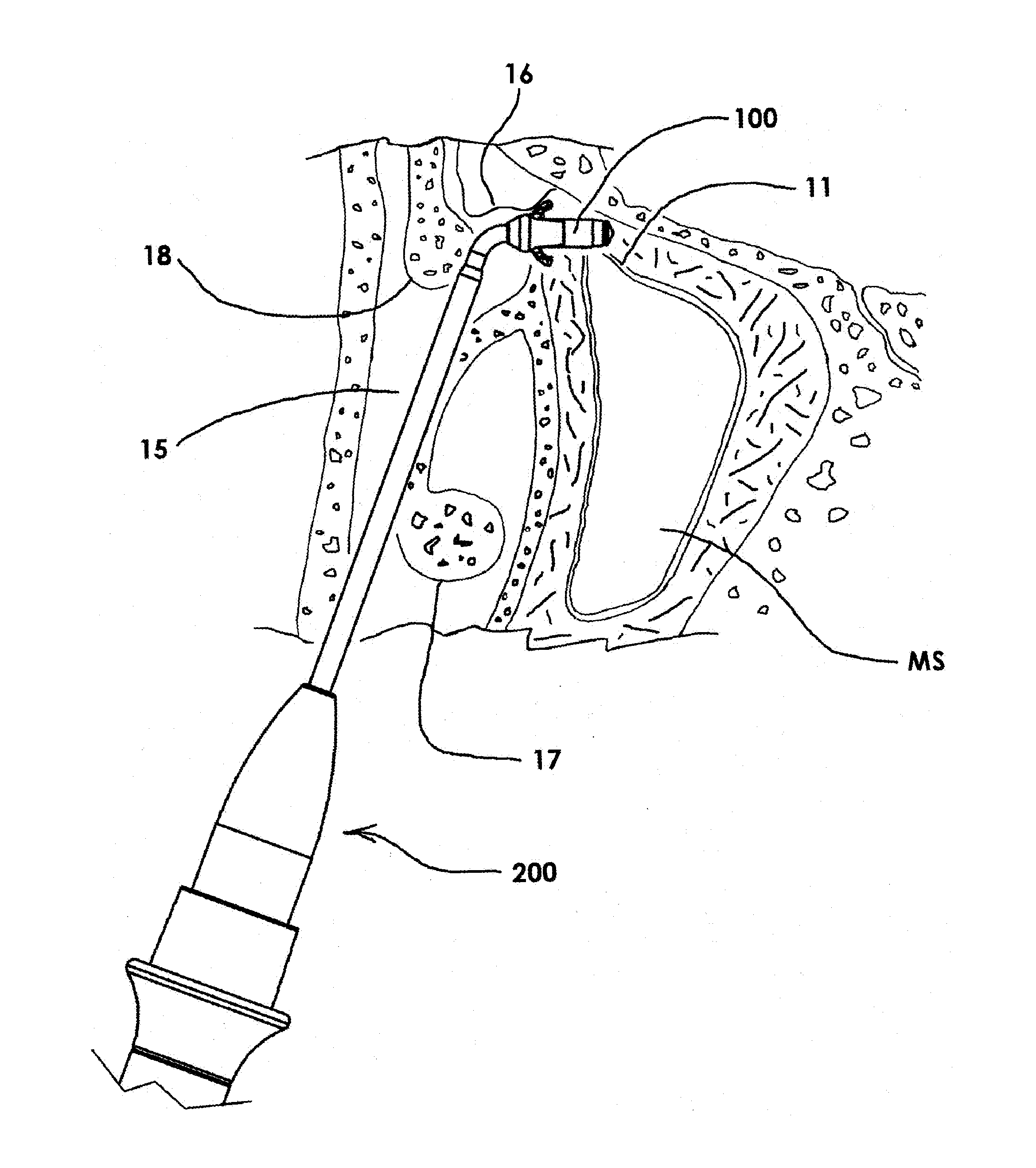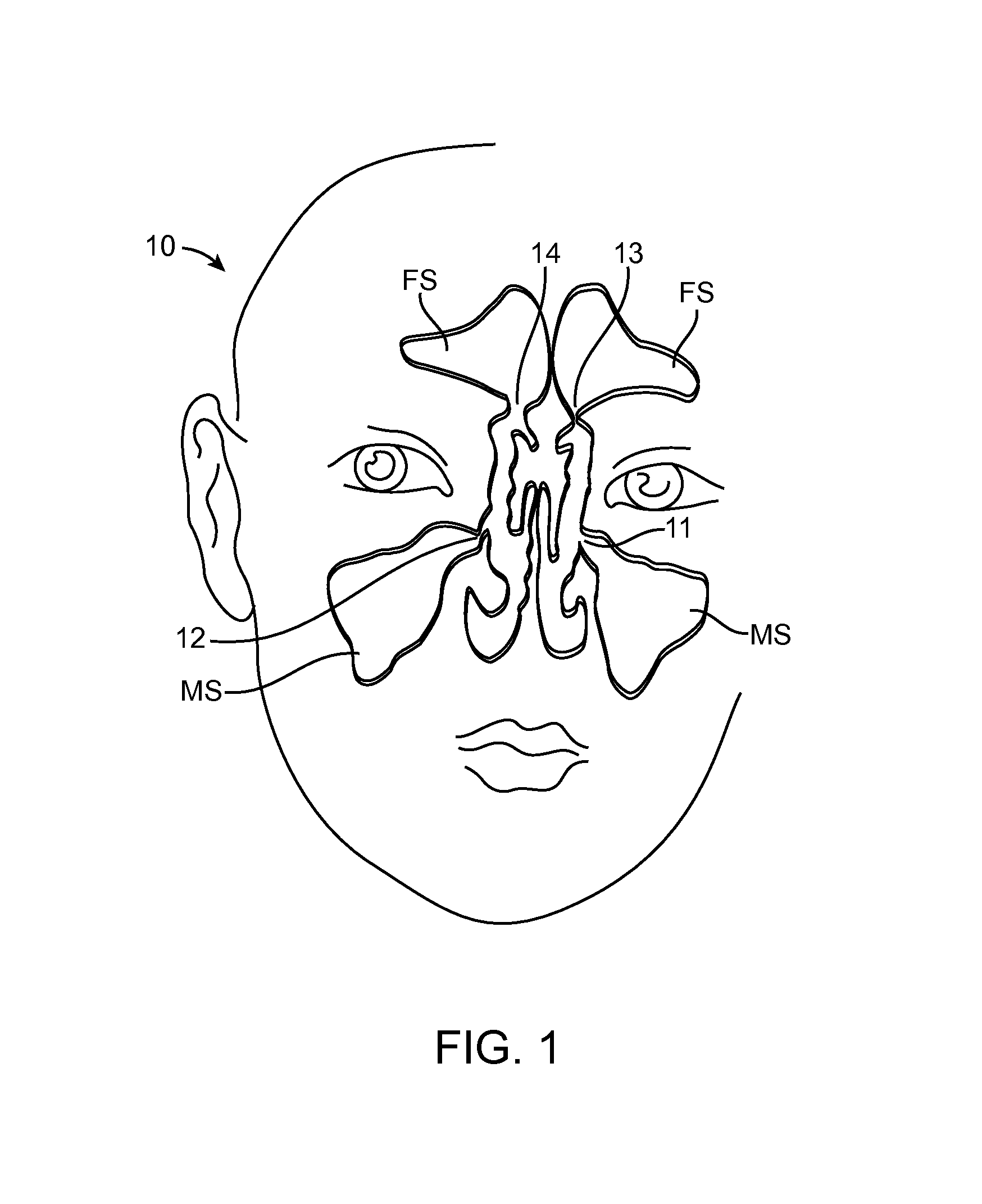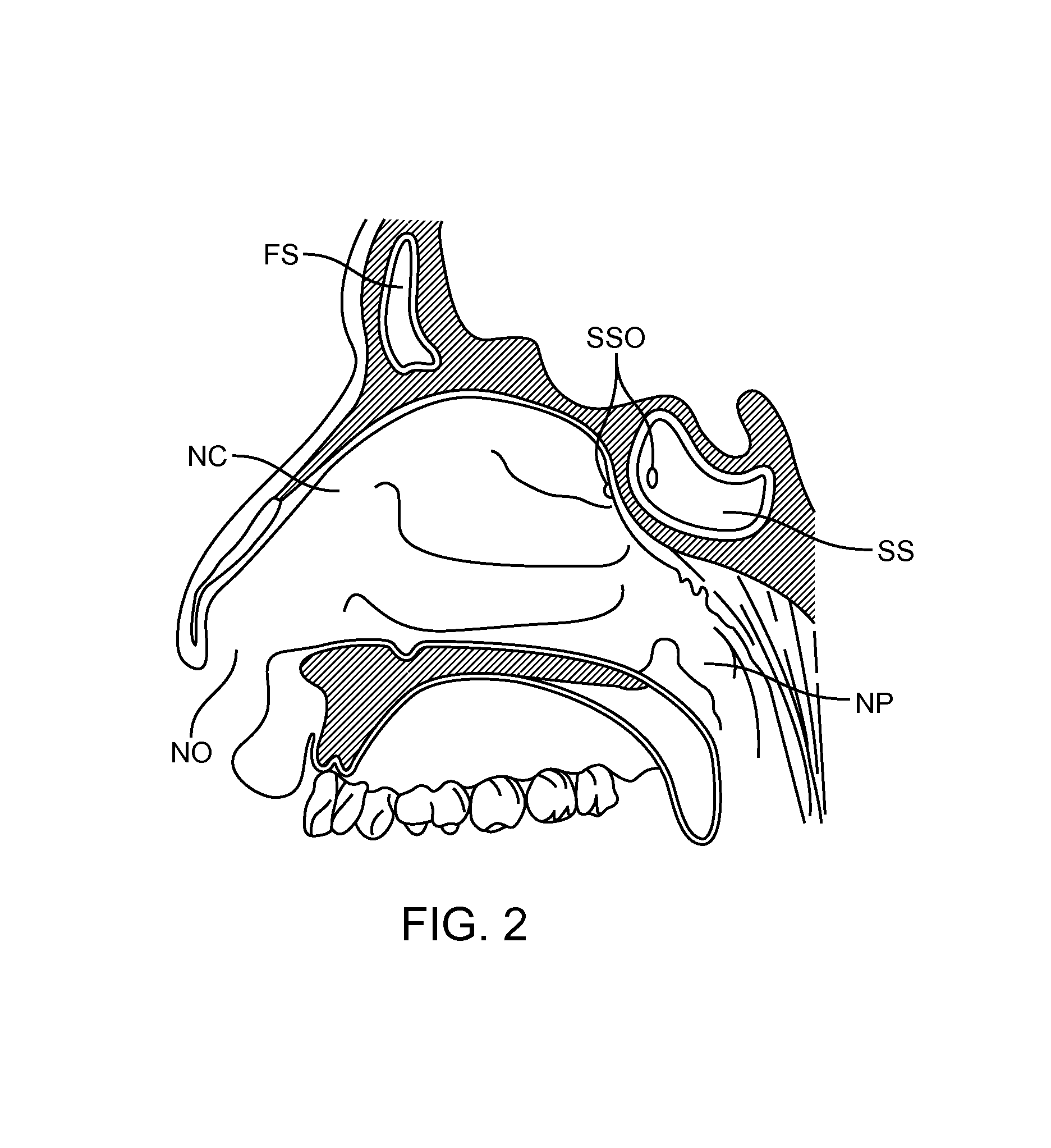Devices and Methods for Dilating a Paranasal Sinus Opening and for Treating Sinusitis
a paranasal sinus and paranasal sinus technology, applied in the field of paranasal sinus opening and sinusitis treatment, can solve the problems of mucosal congestion within the paranasal sinuses, damage to the epithelium that lines the sinus, and obstruction of the passageway which drains through
- Summary
- Abstract
- Description
- Claims
- Application Information
AI Technical Summary
Benefits of technology
Problems solved by technology
Method used
Image
Examples
example 1
[0307]A distal osmotic tablet was fabricated according to the procedures described in Example 1 of U.S. patent application Ser. No. 13 / 219,505, filed Aug. 26, 2011, except as follows. First, Polyox 303 was sifted through a 100-mesh sieve. 8.5 grams of minus 100 mesh material was transferred to a beaker. Sodium chloride powder was ground with a pestle in a mortar and sifted through a 100-mesh sieve. 15.0 grams of sized sodium chloride was added to the Polyox. Next, Methocel E5 was sifted through a 100-mesh sieve. 1.25 g of the sized Methocel was added to the Polyox and sodium chloride. The resulting composition was stirred with a spatula to form a homogenous blend. 7 ml of denatured anhydrous ethanol (formula 3A) was slowly stirred into the blend to form a homogenous damp mass. The mass was passed through a 40 mesh sieve with a spatula to form granules. The resulting granules were transferred to a beaker and dried overnight in forced air at 40° C. The dried granules were then sized a...
PUM
 Login to View More
Login to View More Abstract
Description
Claims
Application Information
 Login to View More
Login to View More - R&D
- Intellectual Property
- Life Sciences
- Materials
- Tech Scout
- Unparalleled Data Quality
- Higher Quality Content
- 60% Fewer Hallucinations
Browse by: Latest US Patents, China's latest patents, Technical Efficacy Thesaurus, Application Domain, Technology Topic, Popular Technical Reports.
© 2025 PatSnap. All rights reserved.Legal|Privacy policy|Modern Slavery Act Transparency Statement|Sitemap|About US| Contact US: help@patsnap.com



